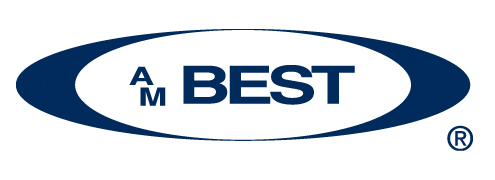"Innovation Leader" or "Non-innovator"? AM Best publishes its draft methodology for scoring innovation
29 March, 2019 Chris Sandilands
AM Best, the rating agency, published draft methodology on the scoring and assessing of innovation earlier this month. This is a significant moment for the industry as it brings innovation into the ‘management mainstream’. AM Best notes in their paper, most companies would “generally score in the lower range” of their proposed scores suggesting that (re)insurers have considerable work to do to ensure that their business model remains ‘fit for the future’ – or to avoid being labelled a “non-innovator”. This blog post first summarises the key points in the paper and second provides the Oxbow Partners view on how companies should respond.
AM Best’s proposals – a summary
Definition of innovation
AM Best start by outlining the importance of innovation (nothing new, but well summarised) and then define it. The definition of innovation is deliberately broad: “the multi-stage process whereby an organization transforms ideas into new or significantly improved products, processes, services or business models that have a measurable positive impact over time and enable the organisation to remain relevant and successful”. They emphasise that innovation “can take many forms” (i.e. not just technology), that it must show a “measurable impact” and that the process must be a “dynamic and ongoing process”.
Methodology
AM Best propose dividing the score into two components: input score and output score.
The input score comprises four sub-components:
- Leadership
- Culture
- Resources: Allocation, strategy and management
- Processes and structure
AM Best point out that an innovation strategy is required, but that it should “incorporate an honest assessment of a company’s capabilities”. For example, a company that is innovative in its collection of new data must also have a robust data strategy in place and “an ability to exploit what it has collected”. This could also be described as a data operating model that responds to the challenges of getting innovative ideas “over the wall” into the organisation and “up the hill” to production-level implementation (to use the terminology of the 2019 Oxbow Partners InsurTech Impact 25). Hiring practices are also called out so that insurers have the right mix of skills in place – something we talked about in our 2018 report about the impact of InsurTech-led change on the Lloyd’s market (written with the Lloyd’s Market Association).
This section concludes by saying that “a company receiving higher scores […] has clearly linked its innovation strategy to specific business objectives, such as explicitly linking innovation-driven growth to business targets, with the goal of creating and sustaining a competitive advantage. The company’s development plan for innovation is iterative […] and is replicable for processes that work.”
The output score is defined as the “tangible and quantifiable” outcome from innovation efforts. The score takes into account two sub-components:
- The result of initiatives
- The level of transformation
They note that companies doing well on this score will have:
- A well-balanced mix of operational and growth-oriented innovation
- The ability to respond quickly to both internal and external pressures
- An implementation strategy that appropriately balances short and long-term initiatives […]
Companies will be divided into five categories based on their score:
- Non-innovators
- Reactors
- Adopters
- Innovators
- Innovation Leaders
The Oxbow Partners view
We agree that innovation is “increasingly critical to the long-term success of all insurers”. We don’t, however, like the word innovation as it still has connotations of the “InsurTech bubble” or “innovation theatre” about it. The innovation that is required today is just the same as that which was required in the past – an analysis of opportunities for and threats to the business and identification of possible responses.
There are however two contextual points that make today’s innovation different and probably contributed to AM Best separating innovation into a separate score (it was previously incorporated in the overall rating assessment). First the speed of innovation is increasing as it become more tech-driven. For example, a digital broker can grow much faster than an offline attempt at distribution consolidation. Second, it is being (partly) driven by external forces over which are arguably intensifying. These drivers are illustrated below.

This is a view that we increasingly hear echoed by insurance investors. For example, some of our private equity clients have pulled back from motor insurance as they worry about how the product will change in the face of autonomous vehicles and don’t feel that motor brokers or insurers have developed an appropriate response so far. An insurance equity analyst recently told us that he felt that the share price of some motor-heavy personal lines players was increasingly being held back by investor concerns about these issues.
We think that AM Best has neatly captured the components of innovation in its framework and that companies would benefit from using it, regardless of the rating impact (minimal initially as the score is a small component of the overall assessment). (Re)Insurers should do six things (not necessarily in this order):
- Introduce programmes for directors, management and staff to challenge and stretch thinking on the future of the industry and implications for the company
- Conduct a robust benchmarking of the company’s innovation capabilities (including people)
- Define what the company’s strategic horizon is and ensure that the business strategy takes into account the different scenarios for the future environment
- Introduce an explicit innovation strategy that dovetails with the business strategy (and identifies, amongst other things, the right approach to accessing innovation – see our 2016 infographic)
- Review the operating and execution model to balance effective governance with the need for experimentation and change
- Implement input and output measurement processes to ensure that innovation ROI can be measured and reported
Oxbow Partners has helped several (re)insurers ‘future proof’ their strategy and build new business models (such as Digital Partners for Munich Re). If you would like to discuss any of these issues, please contact us.




